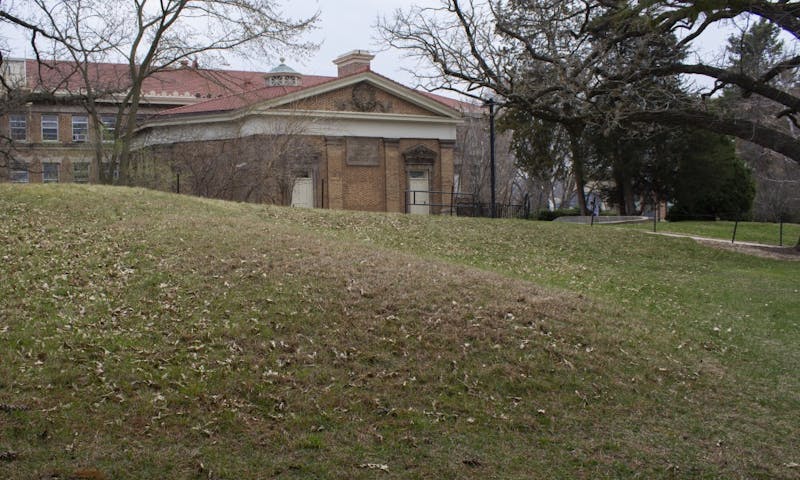
Effigy mounds around campus, remind UW-Madison students and community members of the native history of the land.
Image By: Kalli Anderson
Effigy mounds around campus, remind UW-Madison students and community members of the native history of the land.
Image By: Kalli AndersonToday, UW-Madison’s campus is known for the Memorial Union Terrace, Bascom Hill and the Lakeshore path. Preservation efforts focus on these prominent areas, but many don’t realize that campus’ footprint is relatively new.
UW-Madison was built on Ho-Chunk land, and the tribe’s cultural representation is still physically present on campus, despite contemporary changes to the land.
Evidence of human settlement on the land surrounding Waaksikhomik, meaning "where the man lies" (Lake Mendota) dates back 12,000 years. There are at least 28 habitation sites on the campus shoreline of Lake Mendota.
UW-Madison’s Historic and Cultural Resources Manager Daniel Einstein said locations around Lake Mendota, including Picnic Point, Observatory Ridge and Eagle Heights, were selected by Native people because the lake gave them a vantage point of the surrounding land as well as proximity to water.
Effigy mounds — human burial grounds that are shaped like animals, humans or cultural symbols — were left behind from Native people in the regions surrounding Lake Mendota.
“Important gathering would occur at these burial sites,” Einstein said. “These mounds share a much larger story about the belief systems of the native people.”
There are currently 34 remaining effigy mounds on campus. Aaron Bird Bear, assistant dean for student diversity programs in UW-Madison’s School of Education, said these mounds were built by the ancestors of the Ho-Chunk between 2,500 and 700 years ago.
Effigy mounds are only found in the Western Great Lakes region, making UW-Madison one of the only universities with this Native history on campus.
Since the effigy mounds are such a special part of campus, Einstein said the university preserves this physical land by placing chain barriers in front of the mounds so students cannot walk or bike over the land.
“The university wants to make sure these [mounds], that are 1,000 years old, are still with us 1,000 years from now,” Einstein said.
Einstein said the university preserves the culture of the land through guided walking tours, which are given by himself and Bird Bear, to explain the historical implications of campus’ land.
According to Wisconsin Life, during one of his tours Bird Bear said while the university is making efforts to preserve the historical and cultural meaning behind the Native land, there are also campus landmarks present that are destructive to Native culture, including the statue of Abraham Lincoln that sits atop Bascom Hill.
Bird Bear explained Lincoln was committed to the ethnic cleansing of the Ho-Chunk, which caused many to leave their own land.
However, Bird Bear did highlight that the university worked in collaboration with the Ho-Chunk Nation to develop Teejop, meaning "four lakes", (Dejope) Residence Hall. Dejope was named to honor the Ho-Chunk nation, who once resided on the land the hall now sits on.
Einstein said the Cultural Landscape Tours educate people on the history of the Ho-Chunk Nation as well as UW-Madison’s physical past and present landscape.
“We need to help people appreciate where they live and how their actions and choices influence the land,” Einstein said. “If we can connect people to the past, it provides students with a perspective on how the land has changed over time because of human occupation.”